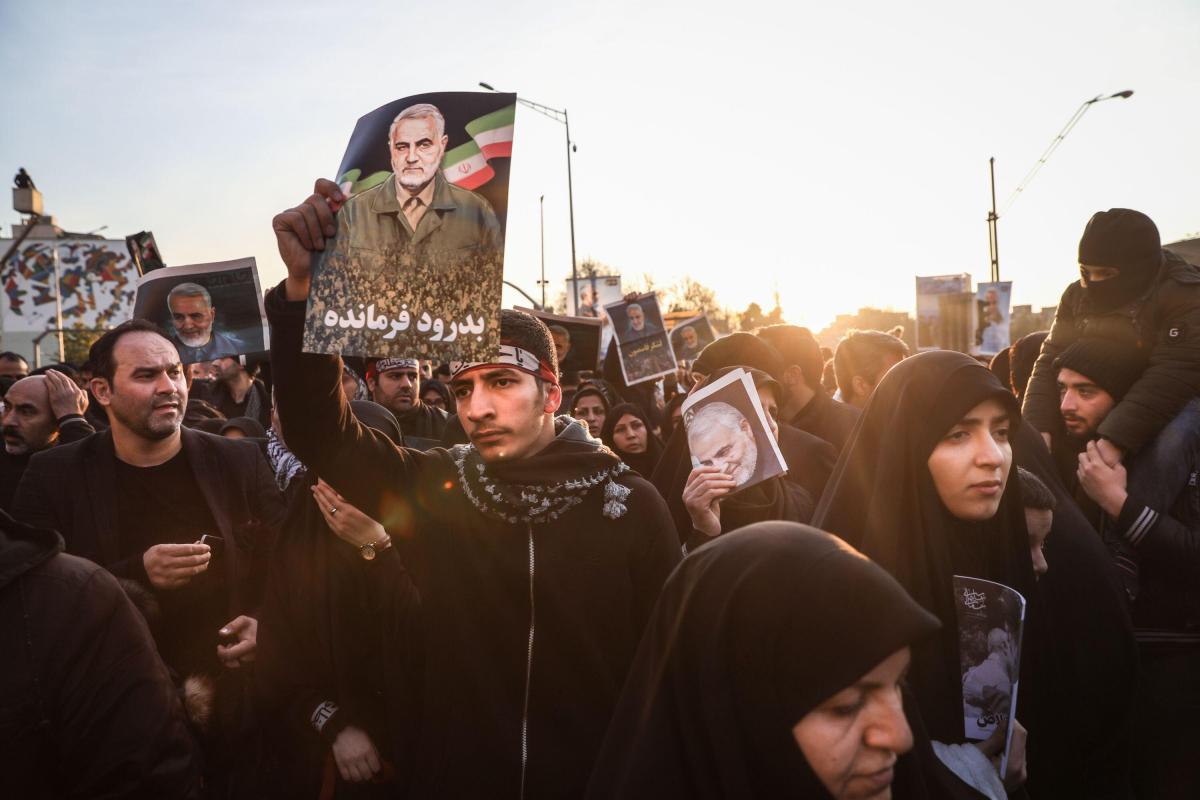When a U.S. drone strike killed Iranian Major General Qasem Soleimani last month, the attack was explained as necessary to prevent a planned Iranian attack on U.S. forces in Iraq. It is likely that Soleimani was in Iraq to arrange such an attack; getting the United States out of Iraq is a major Iranian goal. But Americans’ view of who Soleimani was, and of how important he was to the ongoing wars in the Middle East, is not sufficiently deep.
Understanding his role and that of the Iranian Republican Guard Corps (IRGC) helps explain why the Iranian government reacted so strongly. Iran has suffered many casualties in its proxy wars in places such as Syria, Lebanon, and Yemen. Often, Iranian relatives of the dead are not even told that their loved ones died in combat, because the wars are not particularly popular inside Iran. Had Soleimani not mattered so much to the regime, his death, too, likely would have gone unreported or at least unemphasized. The official blackout on news of the proxy wars made it relatively easy to convince Iranians that the attack on Soleimani had been an aggressive, undeserved U.S. action, rather than a reaction to years of Iranian attacks that already had killed many Americans and a preemptive action to thwart more.
The IRGC is the main bulwark of the Iranian regime and its instrument for foreign warfare. It is also the trusted agency funded to develop new weapons, including nuclear weapons and the missiles intended to deliver them. Not surprisingly, the reliability of the IRGC has a price. It runs a protected, heavily subsidized, part of the Iranian economy and it benefits from that segment’s tolerated corruption.
Abroad, the IRGC, in various guises, including the Quds Force (QF), is the main instrument of an aggressive foreign policy intended to make Iran the dominant Middle Eastern power. It resources and directs proxy armies such as Hezbollah in Lebanon.
The Quds Force, which General Soleimani led, enforces Iranian policy partly by assassination in the West. After Soleimani was killed, an article in the Washington Post reminded readers that a few years earlier he had tried to arrange the killing of the Saudi ambassador to the United States by planning to blow up a Washington restaurant. This plot failed, but many Iranians living abroad have not been as fortunate as the Saudi.
The IRGC is not widely known in the West. It is, in effect, the state within the Iranian state that serves and protects the ayatollahs in Qom. The U.S. attack on one of the most senior and effective IRGC officers becomes not just an attack against an aggressive Iranian policy but also a warning to Iran’s most powerful. Without the IRGC shielding them, they may fall victim to the same popular forces which, a few years ago, brought down the governments in Tunisia and Egypt. Reportedly the attack on Soleimani paralleled a failed attack on the chief IRGC financier, Abdul Reza Shahlai, who was directly supporting the murderous war in Yemen. Without Iranian funding, it would be much more difficult for the insurgents in Yemen and Iraq to function. Similarly, Hezbollah might find it far more difficult to operate in Lebanon. Bashar al-Assad, who has enjoyed considerable Iranian support, would find it much more difficult to wage civil war in Syria without the IRGC on his side, and the millions of Syrian refugees now in Europe might find it much easier to go home.
Soleimani’s death is about deterrence. The drone strike that killed him suggests the U.S. government has finally concluded that the only deterrent that matters to Iran is a threat to undermine the regime by knocking away its key support—the IRGC–QF.
Americans find it difficult to imagine a military organization being integral to nation’s politics, because Western governments have worked to separate their militaries from domestic politics. This helps safeguard liberties and government stability, but it can make it challenging to understand many adversaries.
Consequently, Westerners are poorly equipped to appreciate the role and place of the IRGC in Iran—the nearest Western parallel is the German SS of World War II. Like the IRGC, the SS was the bulwark of Hitler’s state and the only part of his armed forces he trusted. The SS ran an independent segment of the German economy and was responsible for developing advanced weapons. The military arm of the SS had first call on new weapons, including the best tanks. It was the SS that crushed the 1944 coup attempt against Hitler.
A crucial question in today’s chaotic world of gray zone conflict is how to deter adversaries from attacking the United States and its allies. Deterrence requires understanding an adversary, his power bases, what he values, and how he thinks. In Iran, political power depends on the forces the regime wields to protect it from its population—the IRGC. A regime that feels at risk may be deterred. If it does not feel at risk, it may not care about what happens to the population it rules. In Iran, the ayatollahs have taken this a step further; Ayatollah Khomeini once said that he did not fear a nuclear attack which might destroy Iran, as it would usher in an Islamic paradise. However, he might have feared an attack that exposed his regime to overthrow.
Threatening hostile leaders is not a new concept for deterrence—it shaped the way the United States sought to deter the Soviets at the end of the Cold War, and it may have important implications for the relationship with China. During much of the Cold War, Washington’s concept of deterring the Soviet Union was to hold the Soviet people at risk—thinking the Soviet leaders valued their people as much as U.S. politicians valued their constituents. Soviet leaders, however, had ordered the deaths and horrible imprisonment of millions of their own citizens. The more important question for them was whether the United States could endanger their control of their country. Late in the Cold War, the U.S. government came to appreciate this difference, and it published a diagram of the strategic shelter plans for the Soviet leadership, thus sending a direct signal to the Politburo: We know who you are, where you are, where you will be, and how to get you. That served as much more powerful deterrent.
What matters to authoritarian regimes is how they maintain power, and whether Washington can threaten those mechanisms. The IRGC is a key mechanism of the Iranian regime’s grip on power. The attack on General Soleimani demonstrates the United States has both the capability and the intent to threaten the Iranian regime and it should serve as a future deterrent.




